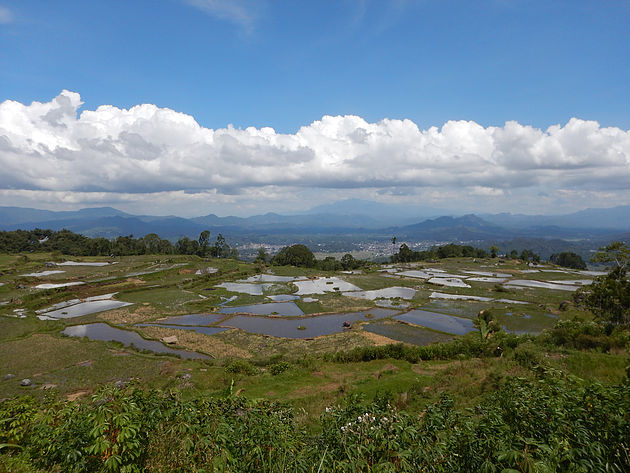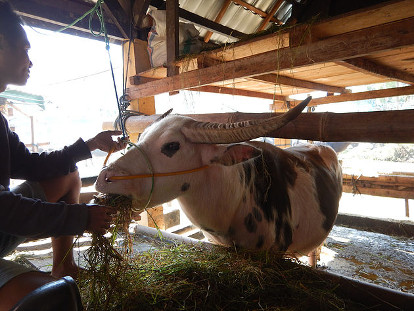 Toraja has a very unique culture, as it focuses around death. People save their entire life for funerals because, for Torajans, it is a celebration of life. When a person dies it is their time to leave earth so they can enter heaven. This celebration can take place a week after someone has passed away or ten years after, meaning a body can be kept in one room for ten years before it’s buried. Families treat a dead body like it is still alive, but very sick, until they have enough money to hold a funeral. They lay the dead body in a room, fully dressed and continue to bring food and water to it, as an offering. This death culture may make the place seem grim and depressing but it is the complete opposite. When I first went to Toraja, with my friends, I had an experience that I wanted to share with everyone that came to visit Indonesia. We trekked amongst beautiful, green landscapes with rice fields surrounding us and we ate delicious food in the bustling city with smiling people everywhere.
Toraja has a very unique culture, as it focuses around death. People save their entire life for funerals because, for Torajans, it is a celebration of life. When a person dies it is their time to leave earth so they can enter heaven. This celebration can take place a week after someone has passed away or ten years after, meaning a body can be kept in one room for ten years before it’s buried. Families treat a dead body like it is still alive, but very sick, until they have enough money to hold a funeral. They lay the dead body in a room, fully dressed and continue to bring food and water to it, as an offering. This death culture may make the place seem grim and depressing but it is the complete opposite. When I first went to Toraja, with my friends, I had an experience that I wanted to share with everyone that came to visit Indonesia. We trekked amongst beautiful, green landscapes with rice fields surrounding us and we ate delicious food in the bustling city with smiling people everywhere.
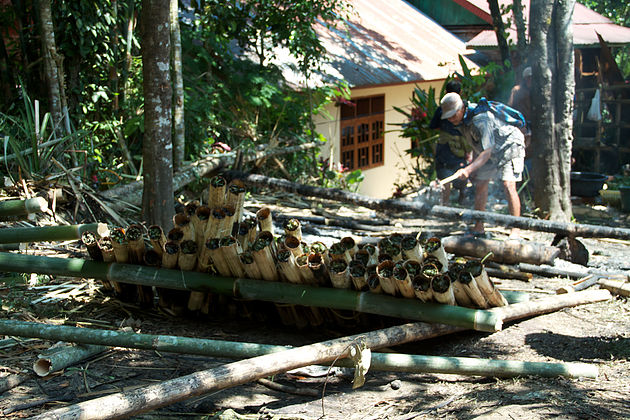
The city centre is only small but you can find really tasty food, which is so different from anywhere else in Sulawesi. One of the most popular meals to eat is called pa’piong. Pa’piong is pork, chicken or fish cooked in a bamboo tube over an open fire for one hour. Tari Travel included this traditional meal for us on our tour. It was served at a beautiful spot in a local Torajan village. We got to try pa’piong manuk, which is chicken with red rice and ferns as vegetables. It was the perfect way to finish off our day exploring the countryside in Toraja. That day we had walked from the city, across a bridge and towards the mountains. There were some astonishing views.
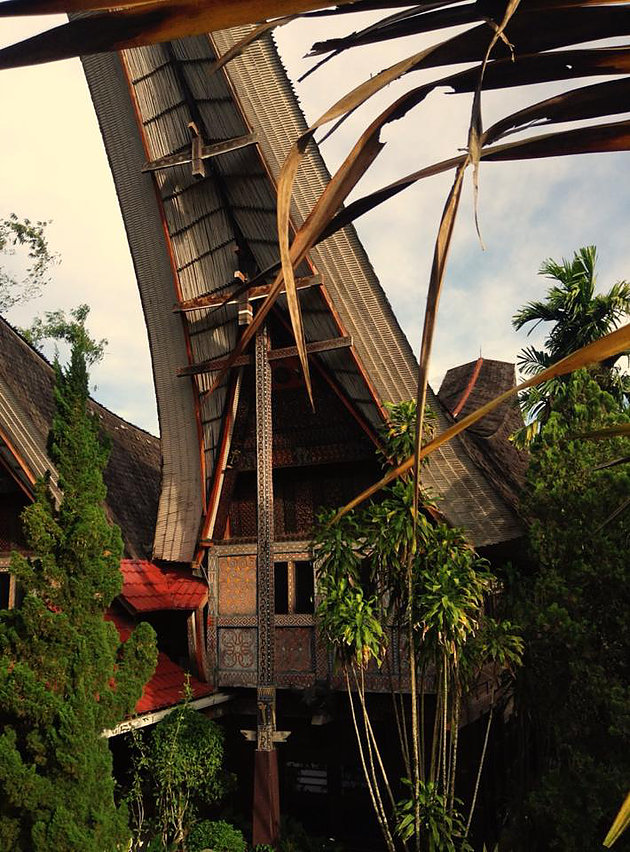
Everywhere we looked there were Tongkonans. Tongkonans are Torajan houses that are built in the shape of boats from when the first people landed on Sulawesi. They are made out of wood with beautiful patterns carved all over them. These woodcarvings are unique to Toraja and there are now over one hundred different patterns, all designed by local Toraja people. Tongkonans are one of the reasons why Toraja is such a picturesque place. It was all so fascinating that we couldn’t stop asking questions, especially about the Torajan graves.
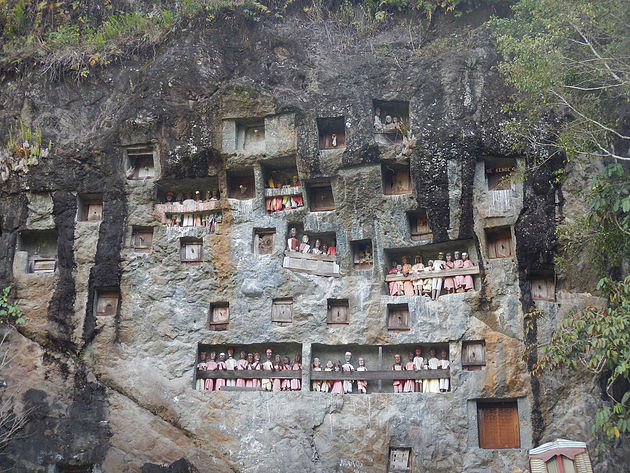
I didn’t know what it was when I first saw a little stone house with a door that would only fit a child in. I was told that graves here are built for an entire family. So every time a family member dies the door to this little stone house opens and the body is placed inside the room with the rest of their deceased family members. These graves are built everywhere and anywhere. They also have statues made to look like the dead. You can see these models of the dead bodies sat outside their graves, especially outside the caves in Toraja. Some caves are open for the public to walk around and it is fascinating to say the least. There are doors and statues all over these caves, symbolizing the entrance of a grave, which is a big hole full of coffins. Even the animals you see here play an important role in Toraja’s culture. You cannot turn a corner without seeing a buffalo. Buffalos are very important, as they are the symbol of prosperities. They have a very important role in funerals, as they are sacrificed for their strength. It is believed that buffalos will use their strength to lift the gates to heaven for the body to pass through. Class and family affiliation still exists in Toraja so sometimes a high-class family must sacrifice twenty-four buffalos at a funeral ceremony. However, the type of buffalo a family has is the most important, as their characteristics define how much they are worth. For example, the light skinned buffalos are the most expensive and a family must be very wealthy to afford one of these. The price ranges because of a buffalo’s horns and the colour of their skin.
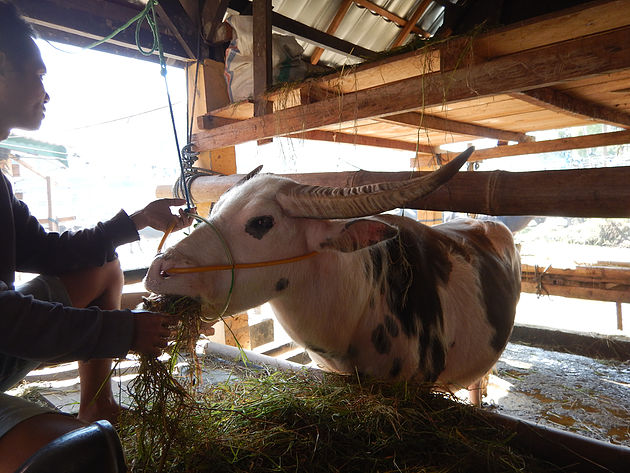
Hearing about the funeral ceremony is completely different to seeing it in person. As we headed to the location, of the funeral we had been invited to, we passed by trucks full of people chatting and laughing who were also on their way there. It felt like we were going to the party of the year. When we arrived the first thing I thought was that it looked like a carnival. There were animals everywhere and the place was decorated in bright colours and shiny material. At first I thought I was intruding but I soon learned that they were all happy to share their culture with us. As we walked towards the main area, where the body was laid in a closed coffin, our tour guide started telling us all about why the ceremony included so many animals. The main animal we could see was a pig. Toraja’s population is mainly Christian and these pigs are sacrificed as offerings to the gods and then eaten by the guests. We then witnessed the male family members carrying out a dance ritual to the sound of women playing bamboo poles. Even though the person may have been dead for a few years, their spirit has not left them until they perform this ceremony. The date of their death is also the date of the funeral and not the actual date they died. It is an experience that was truly fascinating and unforgettable, and yet there is still so much more to see in Toraja. I will continue to enjoy the beautiful culture of Toraja for years to come.
